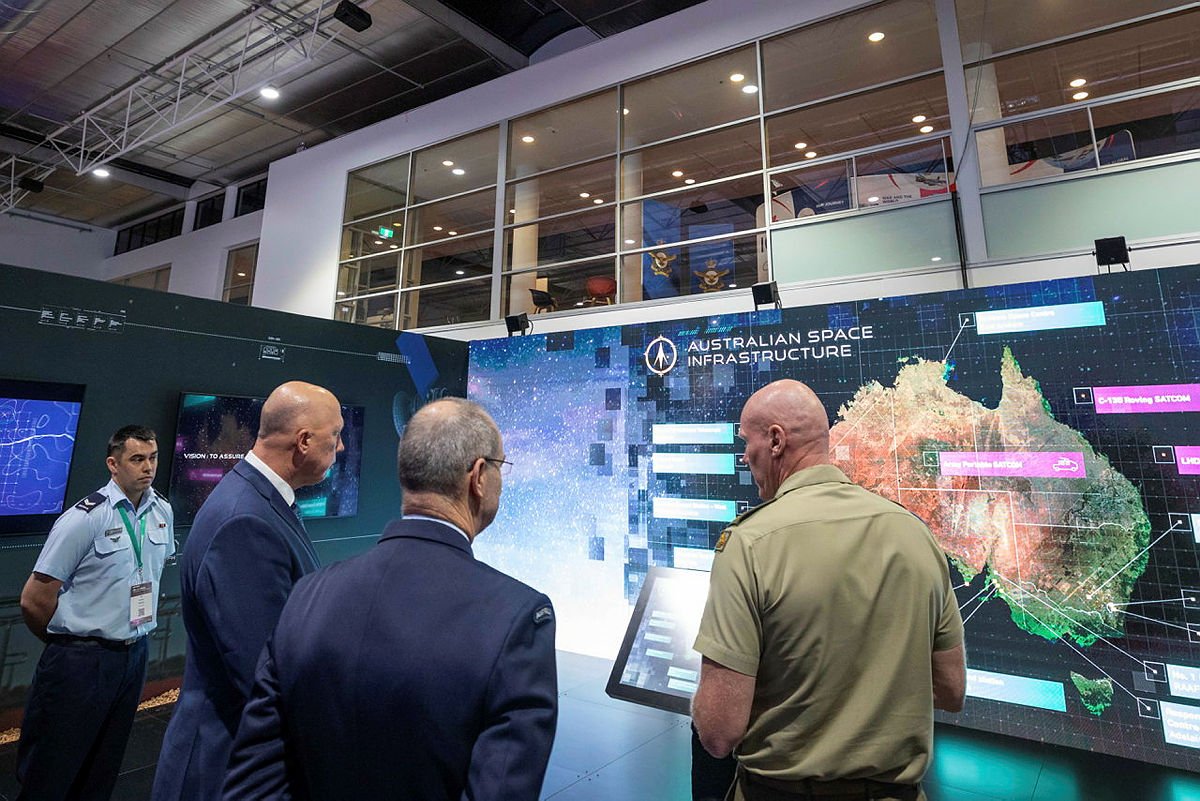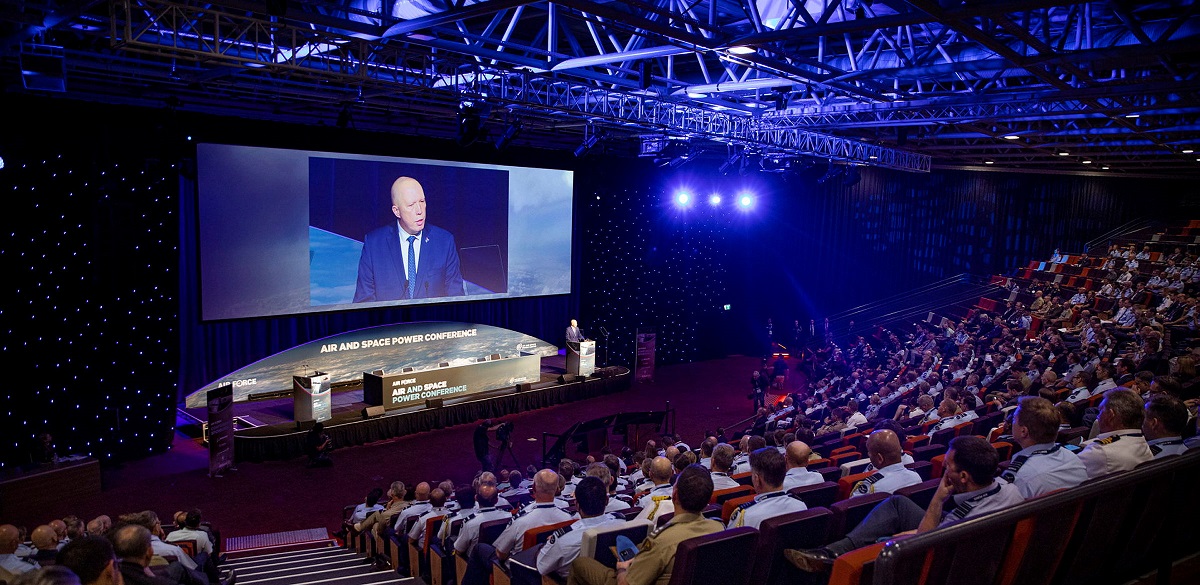By Australian Defence Business Review
Defence Minister Peter Dutton has formally launched the Australian Defence Force’s Defence Space Command.
Speaking at the 2022 Air and Space Conference in Canberra on 22 March, Minister Dutton signalled the commencement of operations for the new Defence Space Command after it was announced in 2021, and AVM Cath Roberts was appointed to lead it in January 2022. The new command will draw personnel from the three armed services, from Defence public servants and industry contractors, and the Australian Space Agency (ASA).
Whilst he acknowledged it as “modest” compared to similar commands being established in the US and other countries, he described it as a “necessary endeavour with a view to protecting our national interests and our need for a Space Force in the future”.
“Together with like-minded partners and the United Nations, Australia has long championed the responsible and peaceful use of outer space in accordance with international norms,” he said. “But space is becoming more congested and is already contested – particularly as the boundaries between competition and conflict become increasingly blurred through grey-zone activities.
“While space is primarily a civil domain — to support navigation, communication networks, financial systems, scientific enterprises, weather forecasting, and disaster response — it will undoubtedly become a domain which takes on greater military significance in the 21st century,” he added. “A domain which is now an operational theatre which provides space-based communication, intelligence, and navigation to the joint force.
“Importantly, Defence Space Command is Australia’s contribution towards a larger, collective effort among like-minded countries to ensure a safe, stable, and secure space domain. By developing our sovereign space capabilities, we will not only become more self-reliant, but also be a better ally and partner through the combined effects of our capabilities.
“Australia’s aim will be to invest in new military space capabilities to counter threats…To assure our continued access to space-based intelligence, surveillance and reconnaissance and to uphold the free use of space.”
Minister Dutton also launched Australia’s Defence Space Strategy which he says will guide the efforts and priorities of Defence Space Command.
“Importantly, Australia and the United States are strengthening our Alliance to support our mutual objectives in the space domain,” he said. “The Australian Department of Defence and the US National Reconnaissance Office have committed to a broad range of cooperative satellite activities which will expand Australia’s space knowledge and capabilities.
“Our partnership will also contribute to the US National Reconnaissance Office’s pursuit of a more capable, integrated, and resilient space architecture to support global coverage in a wide range of intelligence mission requirements.
On the sidelines of the Air and Space Conference, AVM Roberts told media that her organisation initially comprises 105 personnel, and would be located at Fairbairn in Canberra with smaller presences at Air Command near Sydney, Hobart, and co-located with the ASA in Adelaide.
“Our mission is to assure Australia’s access to space,” she said. “We really need to make sure that Australia’s reliance on services from space are protected, not just the military elements.”
AVM Roberts said they needed to be able to deliver and contribute space capability much faster than was planned in the Defence Integrated Investment Plan.
“I am doing a complete architecture review. It has been under way for a short time,” she said. “That work is really really important and I expect you will see modifications. We are going to do things really quickly. I have some really good ideas about how we can deliver capability far more quickly than we have in the past.”
AVM Roberts said she had tasked her officers to get some capability within the next four months. “We have a bunch of space domain awareness (SDA) companies in Australia who can provide us with data as a service,” she said. “We are going to do a bunch of minor projects to actually be able to feed information into the SDA picture and we will be able to share that information not only with our allies in the US but also with any country in the region.”
“We are also testing a mission system to pull that data together,” she added. “It is really important that we start contributing. We have a couple of little satellites up there but SDA is where we can start and we need to operationalise it because we are so far behind.”
Asked if there was a prospect the Joint Project 9102 sovereign defence satellite communications could deliver capability sooner than planned, she said, “If I have something to do with it yes. 9102 followed the traditional approach and the tenders will be evaluated. That will result in a capability being fielded a long time away.
“We need those satellites in geostationary orbit,” she added. “There is no doubt about that. How quickly can we do it? That is something we will talk about with the companies once we have selected a tenderer. I would like it always to be quicker.”
This article was published by ADBR on March 22, 2022.
An additional article focused on the launch of the Space Command was published by the Australian Department of Defence on March 23, 2022 and was entitled Defence Soars Into Space:
As Defence enters into a new space era with the establishment of Defence Space Command, the release of the Defence Space Strategy sets a vector to assure Australia’s access to space for civilian and military uses.
Chief of the Defence Force General Angus Campbell said space was critical to ADF warfighting effectiveness, situational awareness, and the delivery of real-time communications in the current geostrategic environment.
“We must be able to generate space power across the Defence portfolio, supporting the joint force, whole of government, allies and international partners. We must also protect billions of dollars’ worth of commercial and military assets against space debris, collisions and destructive acts,” General Campbell said.
“The decision to create a single organisation to coordinate and manage Defence’s endeavours in space is significant. Defence Space Command brings members of Navy, Army, Air Force, the Australian Public Service and contractors together under an integrated headquarters reporting to the Chief of Air Force as the Space Domain Lead.”
Chief of Air Force Air Marshal Mel Hupfeld said Defence had the responsibility of assuring Australia’s access to space for civilian and military users in a safe and sustainable space environment.
“Advancing Australia’s space power requires a shift in thinking that recognises and supports space as a contested operational domain rather than simply being an enabler to other domains,” Air Marshal Hupfeld said.
“The Government has committed to significantly increasing investment in Defence’s space capabilities by investing around $7 billion this decade to assure our access to space, space services and geospatial information.
“While technologies and systems are important, they are only part of what enables the delivery of space power. Our people and partners will bring the curiosity, creativity and collaborative spirit required to conceive the space power required to meet our future challenges.”
Led by Defence Space Commander Air Vice-Marshal Cath Roberts, Defence Space Command was established to assure Australia’s access to space to defend Australia, our national interests, and promote global security and stability.

“Space is the ultimate high ground. What we see from space gives us an unsurpassed advantage in surveillance and intelligence. It is central to how we will fight and win in the future across multi-domain operations, using advanced hypersonics, precision strike missiles and guided weapons,” Air Vice-Marshal Roberts said.
“We are enhancing our sovereign capabilities so Australia can be self-reliant in the detection of threats and collection of information for the defence of our nation. This is crucial to gaining timely, accurate information for the safety and capability of our forces.
“This evolution of our operational capability will see us become an active contributor in space and ensure we can efficiently and effectively respond to space incidents when required.
“The newly released Defence Space Strategy sets the trajectory for Defence to assure Australia’s access to space. The immediate priority for Defence is to better integrate the many diverse elements of space capability.
“We will look at innovative ways to expand our space capability to meet unique Australian requirements and develop our partnerships with industry and academia.
“Australia’s geographical location and vast open land in the southern hemisphere helps us see things that others can’t. We will continue to work closely with our allies and international partners to mutually assure the responsible use of the space domain.
“Together we will reach for the stars to protect Australia – our freedom, our values and our way of life.”
The featured photo shows the Defence Minister announcing the launch of the space command at the 2022 Airpower Conference held in Canberra.


